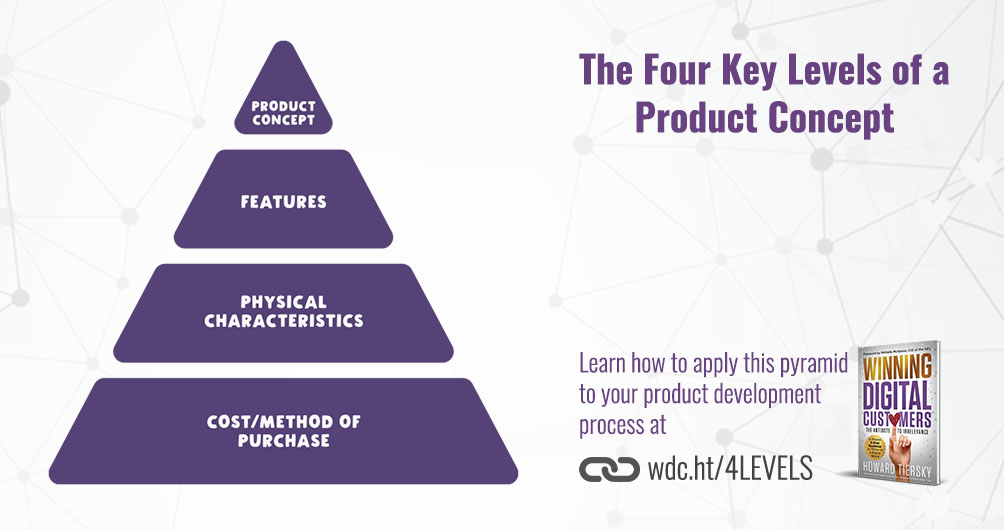The Four Key Levels of a Product Concept

Product ideas are multi-tiered. There is a “core idea” at the top, but there is a whole hierarchy of ideas that have to go below that core idea to form a full product.
For example, here’s a core product idea: create a hybrid between a cell phone and a PC that uses a touchscreen to allow customers to make phone calls. This is, of course, the core product concept of the smartphone. But core ideas must then have idea pyramids developed beneath them to round out the product vision, as shown above. Once you decide to work on a core idea, it requires many more ideas in order to turn it into a buildable product concept.
There are many examples of breakthrough products that copy-catted most of the levels of this pyramid from competing products while innovating on just a single one. The new Sony mirrorless cameras do 90% of the same things as Nikon and Canon DSLR cameras, but they introduce a few key feature innovations, like automatic eye focusing, that set them apart. Thus, as you develop new products, keep in mind that innovation can happen on different levels of this pyramid; your product concept itself does not have to be revolutionary to create a successful product.
To learn more, check out Winning Digital Customers by Howard Tiersky. The book lays out a proven product development process that will help you apply this pyramid to your process. Go to WinningDigitalCustomers.com to buy the book today!